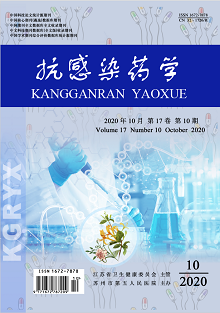LI Xiao-hong, YE Jun, WANG Pei
Objective: To explore the prevention and treatment by using Guizhi Fuling pills on liver fibrosis of rats, and to study its influence on histopathological morphology and the possible mechanism of action. Methods: 88 rats were randomLy divided into normal group (8 rats), model group (20 rats), GUI pregroup (20 rats), GUI treatgroup (20 rats) and Qiu treatgroup (20 rats). Normal group rats were given normal saline to filling the stomach, groups building 6 weeks later, the rats were given colchicine (Qiu treatgroup), normal saline group (model group), GUI pregroup by Guizhi Fuling pills (GUI treatgroup) in rats after treatment of 4 weeks, 10 weeks left hepatic lobe in the same place with the blade cut in liver tissue, used it for HE and Masson staining to observe the changes in the form of liver tissue pathology. The expression levels of MMP-9, TIMP-1 and TGF-β1 were detected by immunohistochemistry. Results: In the normal group, the morphology of liver cells was normal, and the liver fibrosis was not observed. In the model group, the liver cells were denaturated and arranged in disorder, showing different degrees of changes in liver fibrosis; the rats of model group are the most obvious. The liver cell degeneration of rats was treated with Guizhi Fuling pills and colchicine was lighter than that of the model group .Compared with the treatment groups, the cell of preventive treatment group of Guizhi Fuling pills degeneration were not obvious, liver cell arrangement was regular, and liver fibrosis was mild hyperplasia. Immunohistochemical results showed that the positive expression of TIMP-1 and TGF-β1 in the model group were more than that in the normal group, with a significant difference (P<0.01). Compared with the model group, the positive expressions of TIMP-1and TGF-β1 in the treatment group were less (P<0.05 or P<0.01). Compared with Guizhi Fuling pills treatment group and colchicine treatment group, the positive expression of timp-1 TGF-β1 in Guizhi Fuling pills preventive treatment group was significantly reduced (P<0.01). There was no significant difference between Guizhi Fuling pills treatment group and colchicine treatment group (P>0.05). Compared with the normal group, the expression of MMP-9 protein in the model group was significantly increased, and the difference was significant (P<0.001). Compared with the model group, the positive expressions of MMP-9 in the treatment group were less (P<0.05 or P<0.01).Compared with Guizhi Fuling pills treatment group and colchicine treatment group, the positive expression of MMP-9 in Guizhi Fuling pills preventive treatment group was significantly reduced (P<0.05 or P<0.01). There was no significant difference between Guizhi Fuling pills treatment group and colchicine treatment group (P>0.05). Conclusion: Guizhi Fuling pills can reduce the degree of liver fibrosis, and the effect of prevention is more obvious. Its inhibitory effect on liver fibrosis was related to the down-regulation of positive expression of TIMP-1and TGF-β1.
